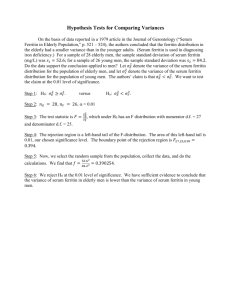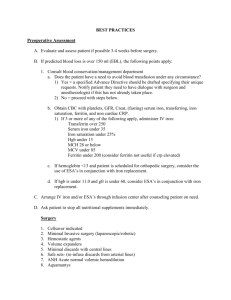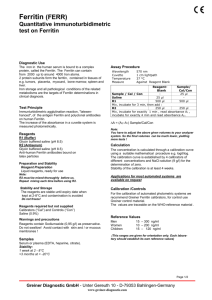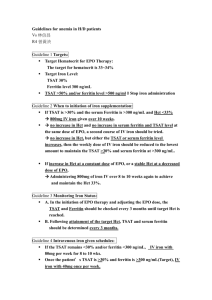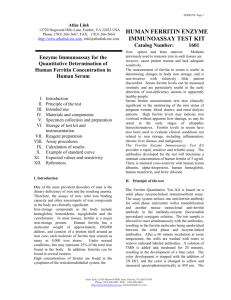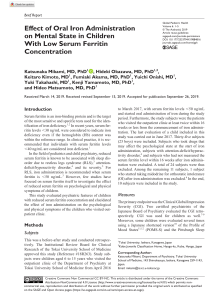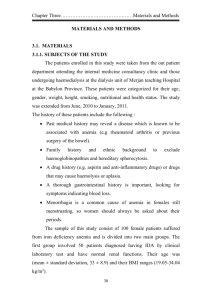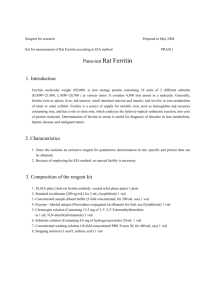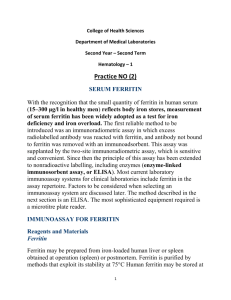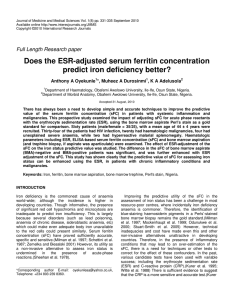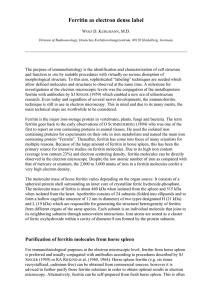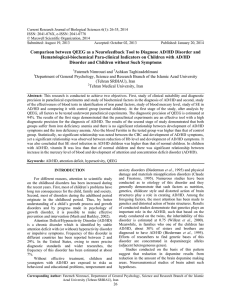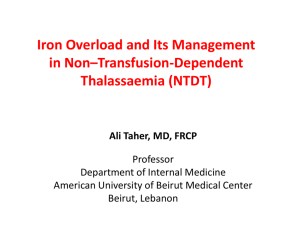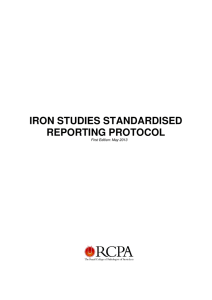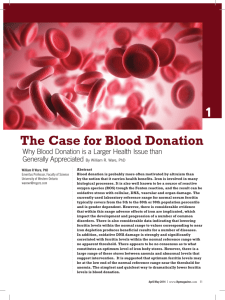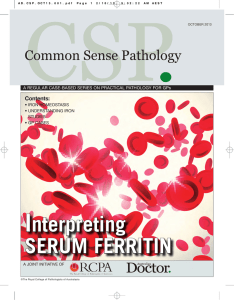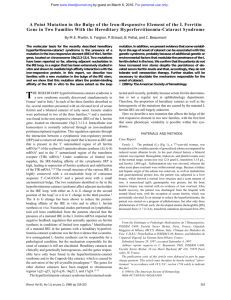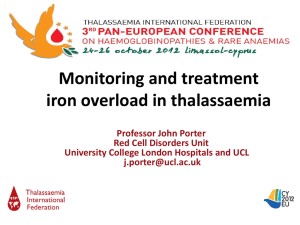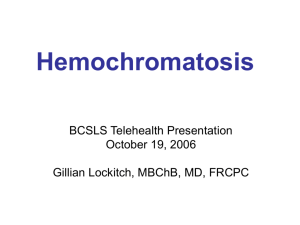CP2 - WordPress.com
advertisement
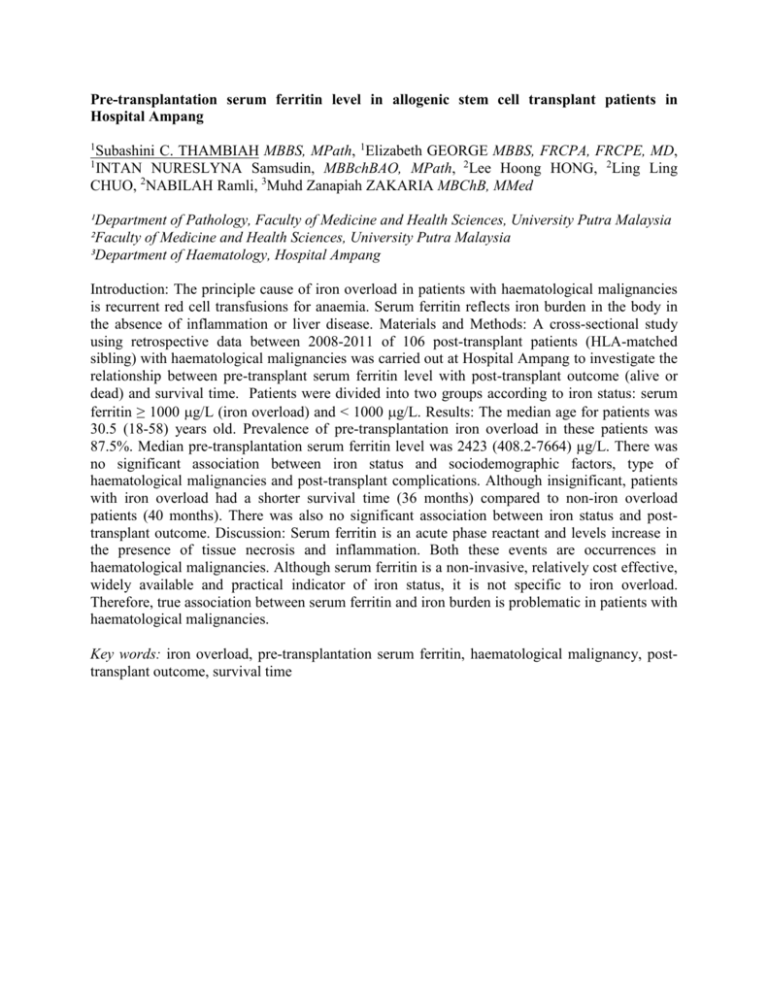
Pre-transplantation serum ferritin level in allogenic stem cell transplant patients in Hospital Ampang 1 Subashini C. THAMBIAH MBBS, MPath, 1Elizabeth GEORGE MBBS, FRCPA, FRCPE, MD, 1 INTAN NURESLYNA Samsudin, MBBchBAO, MPath, 2Lee Hoong HONG, 2Ling Ling CHUO, 2NABILAH Ramli, 3Muhd Zanapiah ZAKARIA MBChB, MMed ¹Department of Pathology, Faculty of Medicine and Health Sciences, University Putra Malaysia ²Faculty of Medicine and Health Sciences, University Putra Malaysia ³Department of Haematology, Hospital Ampang Introduction: The principle cause of iron overload in patients with haematological malignancies is recurrent red cell transfusions for anaemia. Serum ferritin reflects iron burden in the body in the absence of inflammation or liver disease. Materials and Methods: A cross-sectional study using retrospective data between 2008-2011 of 106 post-transplant patients (HLA-matched sibling) with haematological malignancies was carried out at Hospital Ampang to investigate the relationship between pre-transplant serum ferritin level with post-transplant outcome (alive or dead) and survival time. Patients were divided into two groups according to iron status: serum ferritin ≥ 1000 g/L (iron overload) and < 1000 g/L. Results: The median age for patients was 30.5 (18-58) years old. Prevalence of pre-transplantation iron overload in these patients was 87.5%. Median pre-transplantation serum ferritin level was 2423 (408.2-7664) µg/L. There was no significant association between iron status and sociodemographic factors, type of haematological malignancies and post-transplant complications. Although insignificant, patients with iron overload had a shorter survival time (36 months) compared to non-iron overload patients (40 months). There was also no significant association between iron status and posttransplant outcome. Discussion: Serum ferritin is an acute phase reactant and levels increase in the presence of tissue necrosis and inflammation. Both these events are occurrences in haematological malignancies. Although serum ferritin is a non-invasive, relatively cost effective, widely available and practical indicator of iron status, it is not specific to iron overload. Therefore, true association between serum ferritin and iron burden is problematic in patients with haematological malignancies. Key words: iron overload, pre-transplantation serum ferritin, haematological malignancy, posttransplant outcome, survival time

